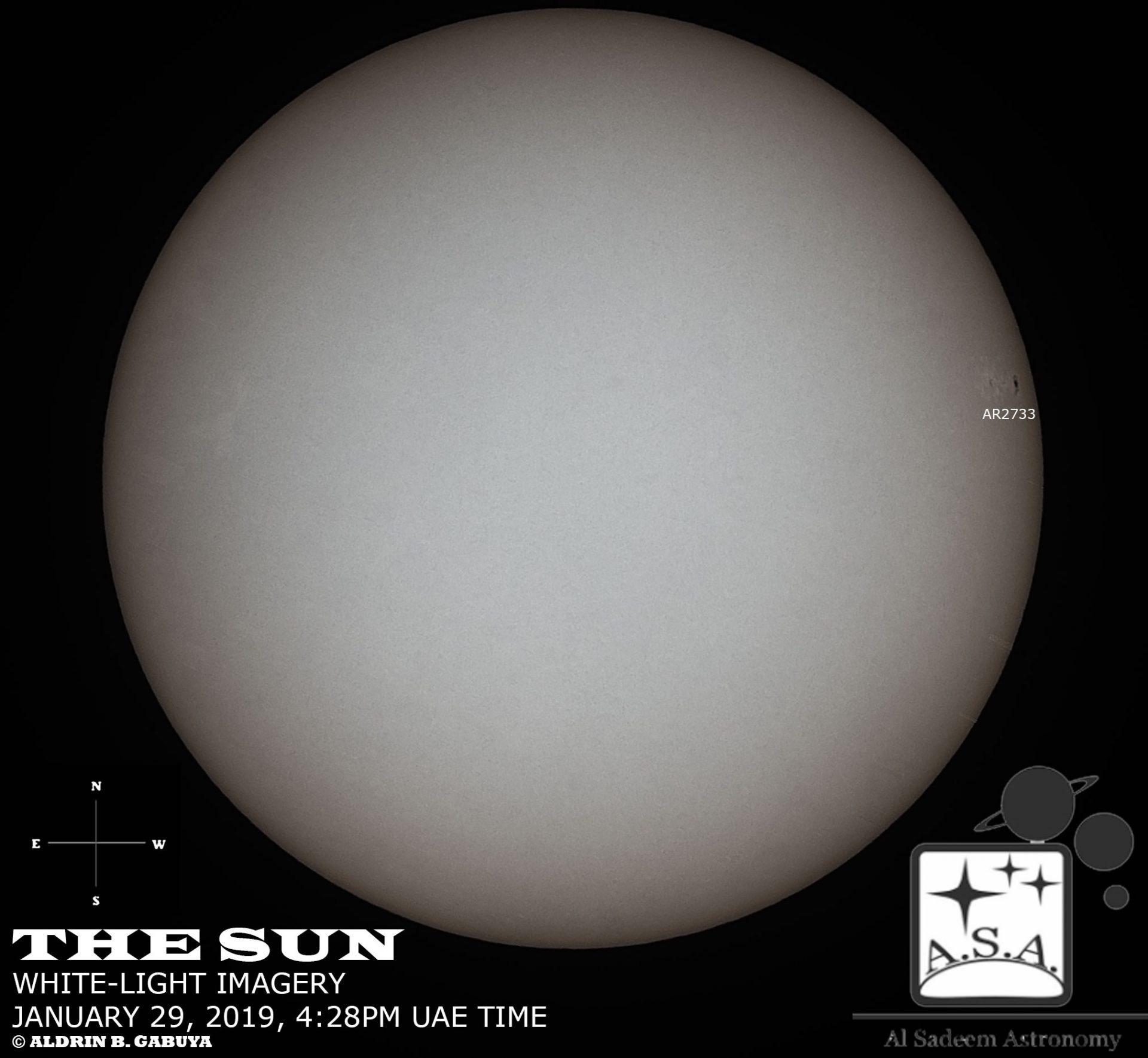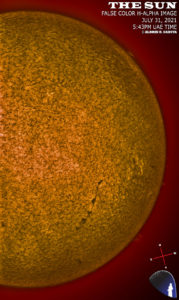The sky was partly to mostly cloudy with moderate to fresh winds which provided poor seeing and transparency at the time these images were taken. Here is today’s white-light solar imagery taken from Al Sadeem Observatory, January 29, 2019.
Trailer spot decay and slight header spot shrinkage in the lone visible sunspot group AR2733 (Modified Zurich/Mcintosh sunspot conifguration: Cso/beta). Space weather agencies recorded a C1.0-class flare associated with AR2733 throughout the 24-hour monitoring period. The latest sunspot number (based on visual count and Wolf number calculation) is 17.
Space weather agencies* forecast solar activity to remain at very low levels with chances of weak X-ray fluxes or flares ranging up to B-class (possibly isolated C-class) intensity. The extent of the frequency and intensity of the Sun’s activity will highly depend on the magnetic flux fluctuations happening in the visible ARs in the coming days. Close monitoring is being conducted by numerous space weather agencies for any significant development.
Equipment used are Skywatcher 120mm refractor telescope with Baader filter and unmodified Canon EOS 1D Mark IV DSLR camera for visible imagery Pre-processing of visible solar images was performed in PIPP, stacking in Autostakkert, slight wavelet adjustments in Registax 6 and post-processing in Adobe Photoshop CC.
*Technical reports courtesy of Solar Influence Data Center (SIDC), NOAA-Space Weather Prediction Center (NOAA-SWPC)
Weather Data (4:30PM – 4:50PM, January 29, 2019):
Average Temperature: 27.9C
Average Humidity: 22%
Average Wind Speed and Direction: 21.5 kph from S
Average Cloud Cover: 75%
Average Air Pressure: 1006.25hpa
Average Light: 186.205 W/m^2
Average UV Radiation: 319.5 µW/m^2 (low)




